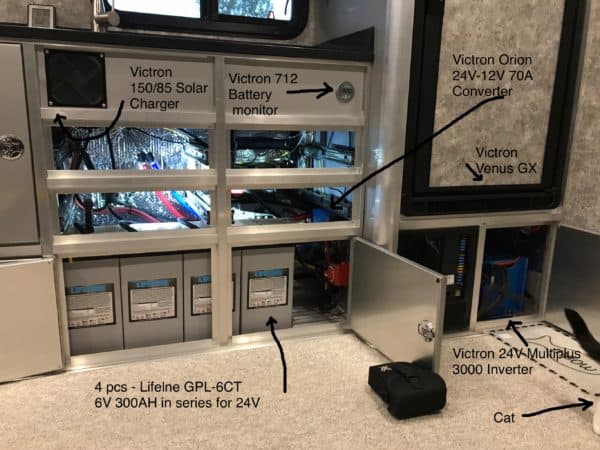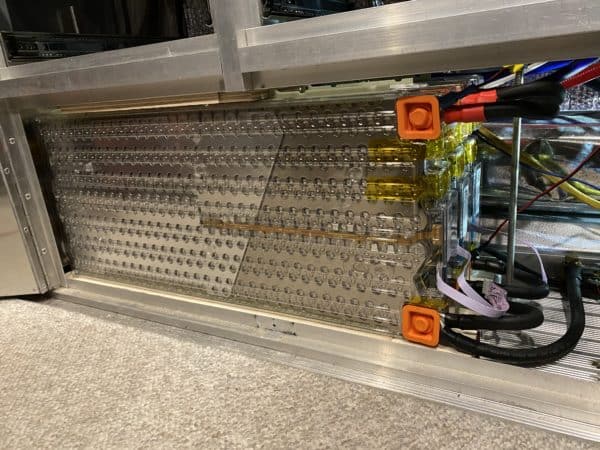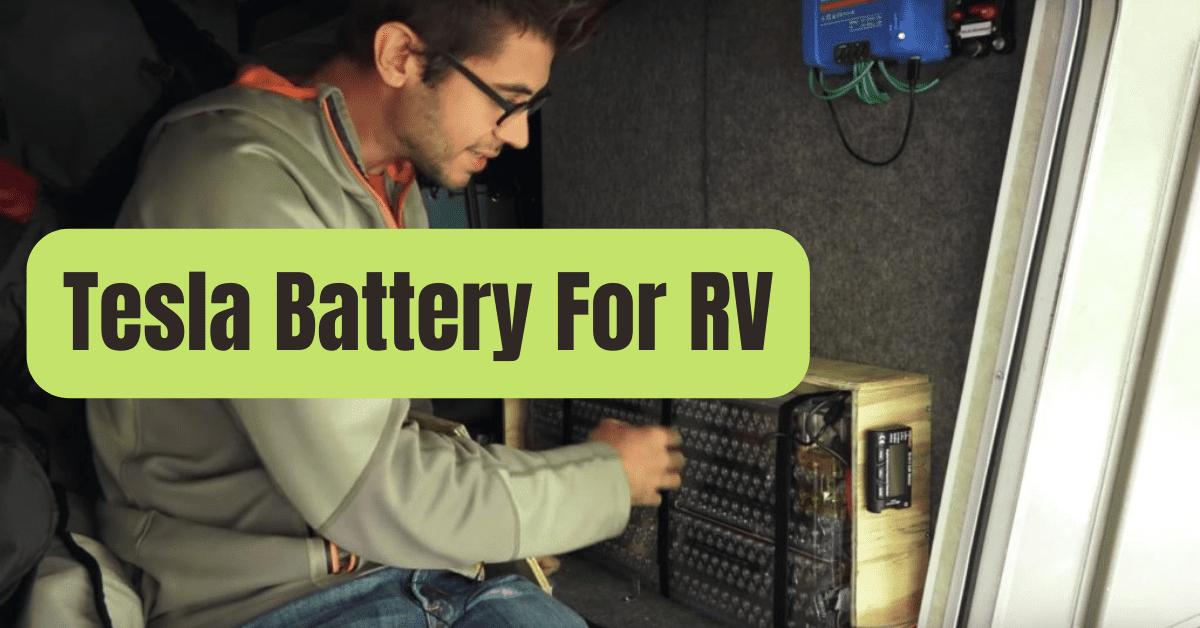Using Tesla batteries to power your RV is probably possible.
They are lithium batteries, but their more modern construction allows them to run at 24 volts rather than 12.
Finding space may be difficult since they are also substantially different in form from the majority of lithium batteries.
Tesla batteries may, however, be used to power an RV.
Should I Use Tesla Batteries To Power My RV?
Here is my knowledge of using Tesla batteries to power an RV.
#1. The Background
My battery bank was made up of four Lifeline 6 volt AGM batteries during the first year I lived in my RV full-time.
They were connected for 24 volts, and I was able to get 240 amp hours (AH) of usable electricity from them.
The water heater, air conditioner, and microwave all worked without a hitch, but not all night.
The 1,600 watts of solar panels I do have on my roof have helped keep the voltage from dipping throughout the day.
My batteries fit under the sink with no problem.
My usual approach usually maintained my batteries above 40 degrees F since I was “chasing 70 degree weather” across the nation.
It was appealing to upgrade to a lithium battery bank because I don’t have a generator to generate more energy.
Peukert’s rule caused my batteries to lose roughly 40% of their capacity when subjected to heavy amp pulls, and I discovered that this happened on a number of times while my AGM battery bank was operating the bedroom air conditioner at night.
I had to park my trailer to take maximum advantage of the solar harvest since AGM batteries must be completely charged at least once each week.
This required turning toward the south, away from any trees, poles, or other obstacles.
It was difficult to completely charge my battery bank during the shorter sunshine hours of late fall and early winter.
Similar to how it was difficult to obtain the full charge during the warmer months of the year, I preferred to park in the shade.

#2. Tesla Batteries: The Case
The advantages of lithium batteries are many.
They don’t need to be periodically fully charged and seem to flourish in environments of heavy use.
They are quicker in charging than conventional batteries, and Peukert’s law, as I previously noted, does not apply to them.
The fact that lithium batteries are substantially lighter and often have a smaller footprint is something I enjoy.
I started by looking at Battleborn’s “drop in replacements,” but six batteries would be needed to replace my 300AH @ 24v.
However, I really wanted more space.

#3. Specs for the Tesla Model S module
The details of the Tesla Model S Module are as follows:
| Capacity (ideal) | 5.2 kWh (233 Ah) |
| Module Energy Density | 198 Wh/kg |
| Discharge Current (max, 3s) | 1,520 A (~6.5C) |
| Discharge Current (10s) | 1,000 A (~4.3C) |
| Discharge Current (continuous) | 233 A (~1C) |
| Discharge Power (max, 3s) | 30 kW |
| Discharge Power (continous) | 5 kW |
| Charge Power (max, 10m) | 8 kW |
| Charge Power (continous) | 5 kW |
| Cell Configuration | 6 series of 74 parallel (6s74p)444 cells |
| Weight | 58 lbs (26.3 kg) |
| Dimensions (approximate) | 27 x 12 x 3″ |
| Voltage (nominal) | 22.2 V |
| Voltage (max) | 25.2 V |
| Voltage (minimum) | 18 V |
| Cell type | Tesla Custom Panasonic 18650(similar to NCR18650B) |
| Cooling | 5/16″ tubing (8mm)Required when (dis)charge >= 1C |
| Max operating Temp | 60C / 140F |
| Min operating Temp | -18C / 0F |
| Min Temp. (charging) | 4C / 41F(Charge rate should be limited at low temperatures) |
#4. My Installation of Tesla Batteries
Without a BMS (Battery Monitoring System), I installed my Tesla batteries and used them without issue for the first three months.
I do not advise anybody to use Tesla batteries in this manner! Instead of using a BMS, I was dependent on other safety equipment.
That component wasn’t a worry for me since I never hook into shore power or generator electricity.
So far, I have stayed on the charge profile’s cautious side.
Right now, I charge to 24.4 volts and then drop to 19.5.
I predict that each module will produce 200AH.










